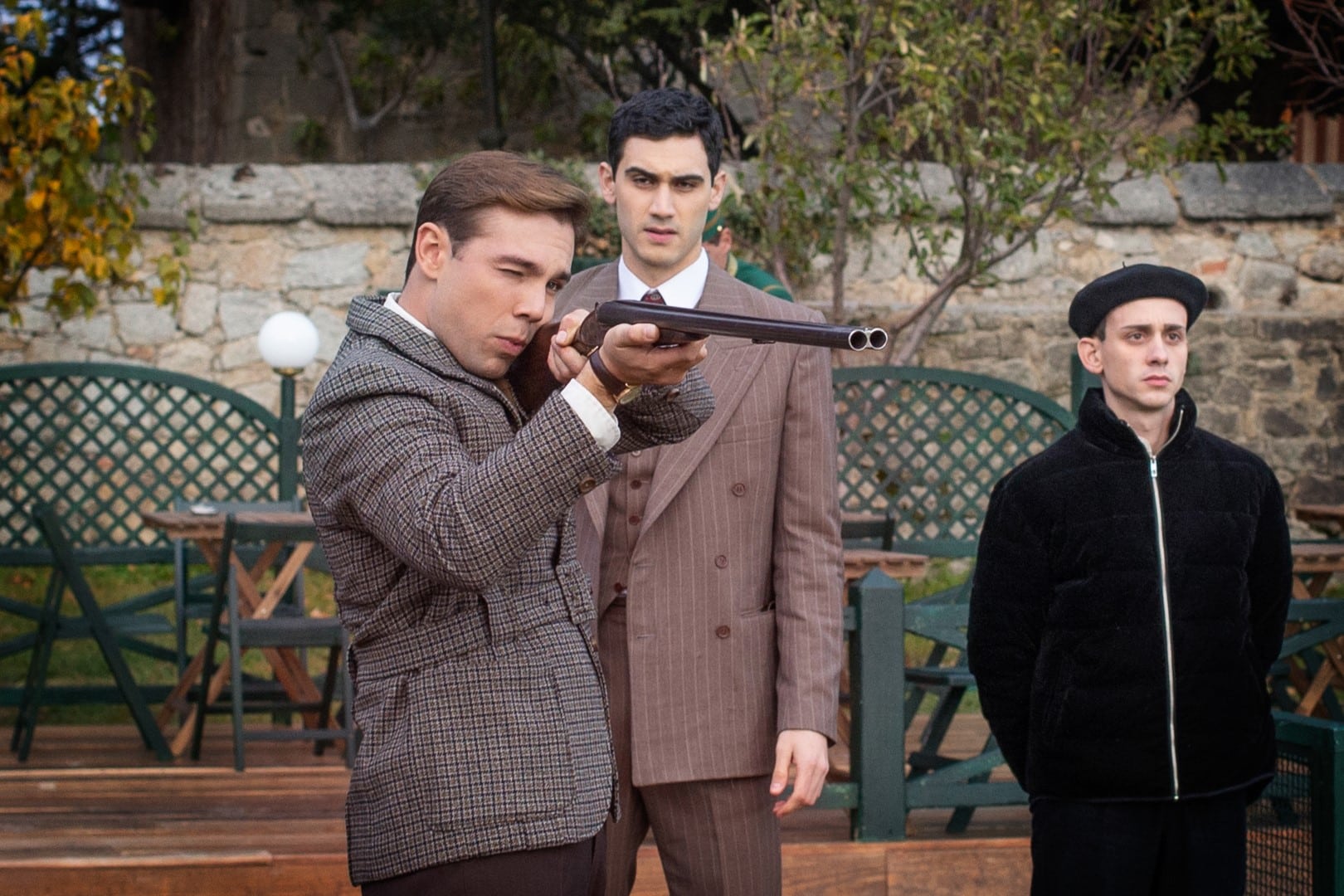Netflix’s Spanish-language miniseries traffics in gorgeous costumes and delectable intrigue, but does so at the expense of its queer characters.
I am tired of stories of queer pain. We are a people whose early lives are steeped in loss and longing, in repression and oppression, in self-hatred and in self-effacement, and it’s draining to see those stories told so often on screen. Those stories can be done right, to be clear, and it’s important that we represent all facets of the queer experience, which often inextricably includes the qualities mentioned above. However, we are more than that.
We’re also a resilient people, a group of people who delight in moments of joy and in finding ways of moving through the world that bring us happiness. When a particular piece of media does not make the effort to get it right, to temper the pain and anguish with moments of beauty, levity, sensuality, and freedom, it can all feel like a punishing exercise in sadism.
One such failed endeavor is Netflix’s new three-part miniseries Someone Has to Die (Alguien tiene que morir), a Spanish-language drama about the experiences of a wealthy family under the oppressive regime of Francisco Franco in the 1950s. The first episode begins with an irresistible premise: Gabino (Alejandro Speitzer) is returning home to Spain after a decade spent abroad in Mexico. He doesn’t know it yet, but his parents have requested his return so they can marry him off to Cayetana (Ester Expósito), the daughter of a family Gabino’s father Gregorio (Ernesto Alterio) is hoping to do business with.

There’s only one problem, which shocks the family: Gabino has brought a friend home with him, a handsome, entrancing dancer named Lázaro (Isaac Hernández). The frightening, Francoist matriarch of the family, Doña Amparo (Carmen Maura), is disgusted by her grandson, while his meeker, Mexican mother Mina (Cecilia Suárez) is kinder to their guest, unable to stop herself from admiring the younger boy’s lithe, muscular body… even as she wonders if her son is admiring the same thing.
The first episode crackles with are-they-or-aren’t-they sexual tension and intrigue. An unspoken secret between Gabino and his former best friend Alonso (Carlos Cuevas) — Cayetana’s sullen brother — may be evidence of an old hookup, or it may just have been a falling-out. Cayetana’s willingness to go along with the arranged marriage may be a shrewd business move despite being aware of the possible homosexuality of her future husband, or maybe she is oblivious and is angling for his friend instead. Gabino and Lázaro’s easy familiarity around each other may be the result of physical intimacy, or else they just may have a particularly comfortable friendship.
Finally, at the end of the first episode, we get our answer when Cayetana locks lips with Lázaro the minute Gabino looks the other way. Overcome with jealousy upon his return, he kicks her out of the car and makes her walk home… and then, once they’re out of eyesight, he plants a kiss on Lázaro himself. Lázaro is disgusted and leaves Gabino sitting alone in shame.
It’s frustrating that [Caro’s] capable of such queer joy and decided instead to craft this [show]…
The subsequent two hours of the miniseries are a grueling exercise in punishing and tormenting everyone involved, setting in motion the complete and total destruction of their carefully-ordered lives in retribution for this eruption of homosexuality into society.
In exchange for embarrassing his sister — and also, we assume, to distract from his own closeted urges — Alonso leads a gang of boys to brutalize Gabino and Lázaro, forcing the latter to dance for them before pummeling the ballerino’s knee with a tire iron. Homosexuality is a crime in Franco’s Spain, and Gabino’s father Gregorio works at a prison, a place where gay and lesbian inmates are tortured, thrashed, and made to eat live cockroaches. There are sobbing, anguished conversations about life in the closet; flashes of a cruising fantasy where gay sex looks like abuse and torment; and for the most part, any moments where a male body is on display for the camera, the gaze is immediately redirected and clarified to be coming from a female spectator’s point of view.
There are guns on screen from almost the very first frame of Someone Has to Die. Gunshot sounds punctuate the credits sequences, and a pigeon-shooting competition forms a central plot point. Rifles and handguns and bullets abound, and in combination with the title of the whole show, it forms the most obvious Chekov’s gun situation I’ve ever seen. And, sure enough, by the time the final credits roll, multiple characters lie dead, and the survivors’ lives are completely shattered.
It’s astonishing to me that Someone Has to Die was created by Manolo Caro, the same man who led The House of Flowers (La casa de las flores), one of Netflix’s most joyously queer shows. That show is a telenovela about a flower shop in Mexico, and there are drag queens, bisexual men, hot silver foxes, and much more, all making for a gleefully-campy delight of a show. It’s frustrating that he’s capable of such queer joy and decided instead to craft this, a show where the specter of homosexuality is so disruptive and dangerous that it causes the complete decimation of multiple families.

The cast, too, seems perfectly engineered to draw in queer audiences, only to watch ourselves in pain instead. Cecilia Suarez is an audience favorite on The House of Flowers. Ester Expósito is a campy, vampy delight on Elite, another show that luxuriates in the drama caused by homosexuality but always takes great care to show queer beauty and sensuality along with societal oppression. Carlos Cuevas’ gay character on Merlí was so popular he got his own spinoff, Merlí: Sapere Aude, which is still running. And the great Carmen Maura is a longtime collaborator of Almodovar — from Pepi, Luci, Bom and Women on the Verge of a Nervous Breakdown all the way up through Volver.
That is not to say the performances anything but good; everyone is very watchable, their performances emotional and well-crafted. Real-life ballet prodigy Isaac Hernández is particularly enchanting as Lázaro, a young man who loves his friend even if he doesn’t reciprocate his feelings. Carlos Cuevas is great, too, as Alonso, a villain who is repulsive and evil and yet, pitiable and sympathetic. It just feels like a bait-and-switch, to bring such a talented queer-friendly cast together in service of a stylish story of such anguish and pain.
It’s important to recognize and remember our history, yes, and for all I know, Someone Has to Die does accurately portray what life was like under Franco. I’m sure everyone involved thought they were making an important historical drama, something to remind us of how far we’ve come. But this is something else. The show seems to delight in showing queer people brutalized on-screen, wringing tension and shock value from queer bodies beaten and broken, from queer spirits in total torment… all without a single moment of escape or pleasure, grinding its characters down into the dirt until there is quite literally nothing left at the end. It’s a punishing note to end the series on.
“Someone” may have had to die. But did it have to go down quite like this, while they lived?

